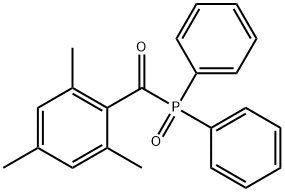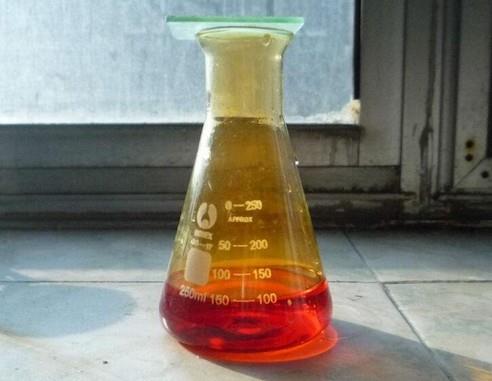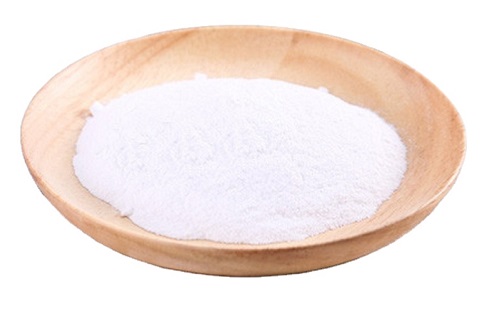Diphenyl(2,4,6-trimethylbenzoyl)phosphine oxide: Synthesis and application
General description
Diphenyl(2,4,6- trimethylbenzoyl)phosphine oxide (TPO) has already been incorporated in several commercial composites. It has shown similar or better curing efficiency and colour stability than resin mixtures containing a CQ/Amine photo-initiator system. Filled and unfilled BisGMA/TEGDMA mixtures initiated by Diphenyl(2,4,6- trimethylbenzoyl)phosphine oxide showed higher reactivity, rate of polymerization and degree of conversion (DC), but lower depth of cure compared to those containing a CQ/Amine photo-initiator system [1]. Lower depth of cure of resins initiated by TPO has been associated with higher molar absorptivity of it than CQ, which thus may reduce light penetration. It has been shown that TPO may be a more desirable photo-initiator than a CQ/Amine system in hydrophilic adhesives due to its higher curing efficiency in water-containing experimental model adhesives [2]. Its appearance is as follows:
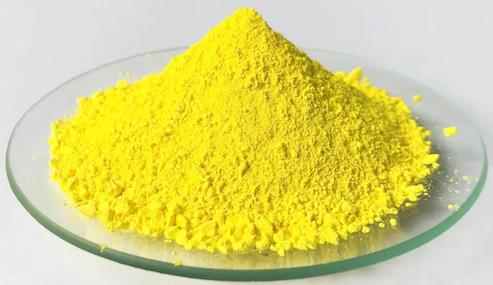
Figure 1 Appearance of Diphenyl(2,4,6-trimethylbenzoyl)phosphine oxide.
Synthesis
The Diphenyl(2,4,6-trimethylbenzoyl)phosphine oxide can be synthesized by the oxidation of a-hydroxy(2,4,6-trimethylbenzyl)diphenylphosphine oxide (a-HDPO) [3]. To a Schleck tube was charged with diphenylphosphine oxide (20.0 mmol, 4.04 g), 2,4,6-trimethylbenzaldehyde (40.0 mmol, 5.9 mL), and toluene (30.0 mL), then the mixture was stirred at room temperature for 16 h, the residue was washed with EtOAc (50 mL) and recrystallization, affording a-HDPO with 6.3 g (white solid, 18.1 mmol, 90% yield). A mixture of a-HDPO (0.05 mmol, 17.5 mg) in CH2Cl2 (2.0 mL) and MnO2 (1.0 mmol, 89.6 mg) was stirred at room temperature for 1 h. After removal of MnO2 (via centrifigation) and the solvent (vacuumed under reduced pressure), the crude product was diluted in CDCl3 and detected by 1H NMR. The 1H NMR yield was calculated by integrating the single peaks at dH = 6.798 ppm (Diphenyl(2,4,6- trimethylbenzoyl)phosphine oxide), dH = 6.687 ppm (a-HDPO) and d H = 6.689 ppm (MesCHO) based on a-HDPO used. Diphenyl(2,4,6- trimethylbenzoyl)phosphine oxide prepared by the scaled-up reaction (0.5 mmol) was purified through a silica gel column with EtOAc/Hexane = 1/2 as eluent. 1H NMR (400 MHz, CDCl3 ): d 7.96–7.99 (m, 4H), 7.48–7.54 (m, 6H), 6.79 (s, 2H), 2.25 (s, 3H), 2.02 (s, 6H); 13C NMR (100 MHz, CDCl3): d 220.13 (d, JP–C = 72.2 Hz), 140.69, 136.34 (d, JP–C = 39.6 Hz), 134.99, 132.52 (d, JP–C = 2.5 Hz), 131.98 (d, JP–C = 8.7 Hz), 129.76 (d, JP–C = 92.8 Hz), 128.99, 128.84 (d, JP–C = 11.8 Hz), 21.31, 19.79; 31P NMR (162 MHz, CDCl3 ): d 13.80.
Application
It is a photoinitiator mainly used for screen printing ink, offset printing ink, flexographic printing ink, and wood coatings. Diphenyl(2,4,6- trimethylbenzoyl)phosphine oxide can be completely cured on white or high titanium dioxide pigmented surfaces. It is widely used in various coatings, due to its excellent absorption performance, and it is particularly suitable for screen printing ink, offset printing, flexographic printing ink, and wood coatings. The coating does not turn yellow, with low post polymerization effect and no residue when the Diphenyl(2,4,6- trimethylbenzoyl)phosphine oxide is added to. It can also be used for transparent coatings, especially suitable for products with low odor requirements. Used alone in unsaturated polyester containing styrene system, Diphenyl(2,4,6- trimethylbenzoyl)phosphine oxide has high initiation efficiency. For acrylic ester systems, especially colored systems, it is usually necessary to use them in combination with amine or acrylamide, as well as other photoinitiators to achieve complete curing of the system. It is particularly suitable for curing low yellowing, white systems, and thick film layers. The use of photoinitiator Diphenyl(2,4,6- trimethylbenzoyl)phosphine oxide in combination with MOB240 or CBP393 can improve the curing efficiency. It is the best extraction solvent for petroleum aromatics devices and also used as a formylation reagent in the field of fine chemicals.
References
[1]Leprince et al. Photoinitiator type and applicability of exposure reciprocity law in filled and unfilled photoactive resins. Dental Materials 2011;27:157–64.
[2]Cadenaro et al. Influence of different initiators on the degree of conversion of experimental adhesive blends in relation to their hydrophilicity and solvent content. Dental Materials 2010;26:288–94.
[3]Zhang et al. Conversion of a-hydroxy(2,4,6-trimethylbenzyl)diphenylphosphine oxide to TPO: oxidation vs decomposition. Phosphorus, Sulfur and Silicon and the Related Elements. 2021, 3(196): 207-210.
Related articles And Qustion
See also
Lastest Price from Diphenyl(2,4,6-trimethylbenzoyl)phosphine oxide manufacturers
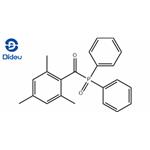
US $0.00-0.00/KG2025-12-02
- CAS:
- 75980-60-8
- Min. Order:
- 1KG
- Purity:
- 98
- Supply Ability:
- 10000KGS

US $1.10/g2025-09-15
- CAS:
- 75980-60-8
- Min. Order:
- 1g
- Purity:
- 99.9%
- Supply Ability:
- 100 Tons Min
